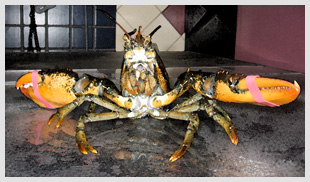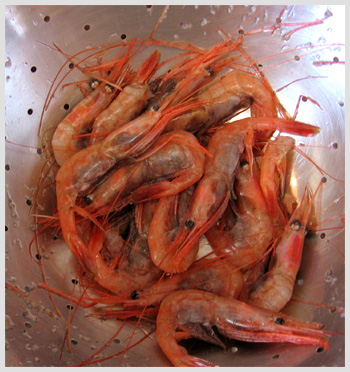Water Ways: Love is a Many Splendored Thing
By Melissa Waterman
 Photo by Melissa Waterman
Photo by Melissa Waterman
When I was a student in college, I spent a semester at the Mystic Seaport in Connecticut. I studied all manner of maritime topics – history, oceanography, navigation. Among the many facts to which I was introduced were the myriad forms of sailing ships common in the 17th and 18th centuries. In the museum’s many galleries there were small models of literally hundreds of other vessels of various rigs. And that’s where I learned about (nudge, nudge, wink, wink) hermaphrodite brigs.
A hermaphrodite brig is not a salacious offer found in your e-mail spam folder. Rather, it is a two-masted sailing ship, where the foremast is square-rigged and the mainmast is fore-and-aft rigged. It is also called a brigantine.
In the natural world, a hermaphrodite is an animal or a plant possessing both male and female sexual organs. According to my dictionary, it can also be a person or thing in which two opposite qualities are combined. In Greek mythology, Hermaphroditus was the son of Hermes and Aphrodite, the goddess of love. His parents arranged for him to be raised by the naiads (nymphs) of Mount Ida. Apparently he felt some wanderlust and at age 15 left the mountain to visit foreign lands. One day he discovered a lovely pool of clear water in which to bath. In the pool lived the nymph Salmacis who, upon seeing Hermaphroditus, immediately fell in love with him (nymphs seem to do that frequently in Greek myths).
 Pandulus borealis, the northern shrimp.
Pandulus borealis, the northern shrimp.
Photo by Melissa Waterman
She hugged and kissed Hermaphroditus and declared her undying love for him but he rejected her advances. Salmacis turned away and vanished into the forest. Hermaphroditus then decided it would be a good time for that swim and jumped into the pool. Whereupon she popped out of the woods, dove into the water, and implored the gods to never let them be separated. The gods, being in a mildly benevolent mood that day, said “OK,” and melded the man and woman together into one body forever. The story does not indicate what Hermaphroditus thought of the results.
Hermaphroditism can be found in the ocean among several different species. Close to home we have Pandulus borealis, the northern shrimp. Northern shrimp are sequential hermaphrodites. Every northern shrimp is born a male. When a male shrimp is 3 ½ to 4 years old, he turns into a female. But before that watershed event, the younger shrimp mate with the older, now female shrimp who, just a few years ago, were male. All this sexual shifting about might make even Alfred Kinsey dizzy. Once fertilized, the females migrate to the coast in the fall to hatch their eggs during the winter months. Their offspring are, of course, all male.
 In real life, the clownfish can change its sex.
In real life, the clownfish can change its sex.
Then there’s the determined clownfish father named Marlin made famous in the movie “Finding Nemo.” Marlin had a deep secret: he was not always a he. Clownfish can change sex. The fish live in symbiosis with stinging anemones. Each anemone cluster generally holds one large female fish, a smaller reproductive male, and then a cluster of even smaller non-reproductive males. If the large female dies or is captured, the reproductive male will eventually change sex to become female. That prompts one of the non-reproductive males to put on a little weight and become sexually mature. Thus no one has to move out of the anemone neighborhood in order to create the next generation.
Wrasses also use hermaphroditism to their evolutionary advantage. On a given section of reef one male will dominate the other males and females of the school. He gets to mate with specific females frequently while the rest of the gang simply release sperm and eggs into the water and hope for the best. But should that dominant male die, the largest wrasse of the group, often a female, will change to become the new lead male.
Then there are snails, the classic hermaphrodites. Many snails contain within themselves both male and female reproductive organs. This allows an individual snail to mate with any other member of its species instead of waiting for one of the opposite sex to amble by.
Terrestrial snails are known for a rather direct approach to mating. They use calcium carbonate arrows which the animals propel from their bodies as sperm carriers. Remember, each snail is both male and female so every individual can do this. After exchanging darts, they gestate their fertilized eggs and then hatch them in the early spring or late autumn. Some scientists have compared terrestrial snails’ mating habits to Cupid’s arrows of love.
Arrows of love? Hmmmmm.

 Photo by Melissa Waterman
Photo by Melissa Waterman Pandulus borealis, the northern shrimp.
Pandulus borealis, the northern shrimp. Photo by Melissa Waterman
 In real life, the clownfish can change its sex.
In real life, the clownfish can change its sex.
Related Articles
Share this article:
2023 Maine Boat & Home Show

Join Us for the Maine Boat & Home Show!
Art, Artisans, Food, Fun & Boats, Boats, Boats
August 11 - 13, 2023 | On the waterfront, Rockland, Maine
Click here to pre-order your tickets.
Show is produced by Maine Boats, Homes & Harbors magazine.















